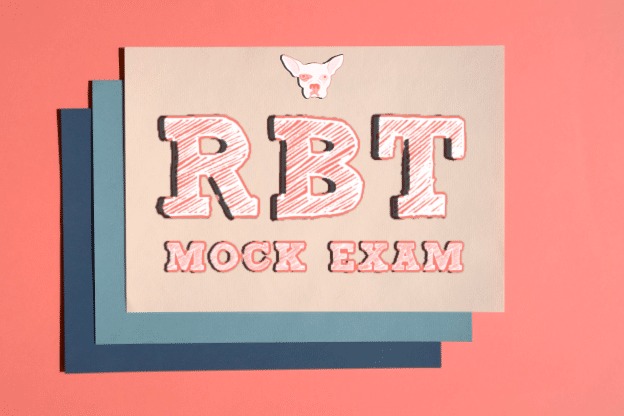Why a Boulder-Focused Approach Wins on the SAT and ACT
Boulder students thrive in rigorous classes, packed schedules, and a culture that values outdoor time as much as academics. That combination demands an efficient, targeted plan for the SAT and ACT. The path to higher scores starts with understanding the structure of each exam, building a calendar that respects AP and IB crunch times, and practicing with material that mirrors the real test experience.
The SAT rewards precision and pattern recognition: linear equations, advanced algebra, data analysis, grammar mechanics, and evidence-based reading. The ACT prizes speed and steady accuracy across English, fast-moving Reading passages, data-heavy Science, and Math that reaches into trigonometry. A smart plan teaches the similarities—grammar rules, data reasoning—while addressing the unique quirks of each test. That dual emphasis keeps options open for students who want to try both exams before committing.
Practice quality matters. Working through a Real SATs pdf or Real ACTs pdf can surface the timing traps and question styles that third‑party materials miss. When students log mistakes by category—comma rules, function notation, main idea inference—they turn vague frustration into a roadmap for improvement. The result is measurable progress in fewer study hours, which matters during busy seasons of robotics, climbing, or orchestra.
Content review is most effective when it’s paired with test-specific tactics. On the SAT, that means mastering no‑calculator arithmetic shortcuts and eliminating trap answers using textual evidence. On the ACT, it means scanning the Science section for figure titles and axes first, then answering data‑direct questions before inference items. In both exams, grammar success comes from a short list of high‑yield rules: subject‑verb agreement, punctuation with conjunctions, pronoun precision, modifier placement, and concise style.
Finally, score growth depends on sustainable habits. Short daily sessions—20 to 30 minutes of targeted drills—often beat marathon cramming. Students who consistently practice under realistic timing and then debrief effectively, especially with official materials, build stamina and confidence that transfers straight into test day.
Private Tutoring and Study Plans That Fit Boulder Life
One-to-one guidance accelerates progress by customizing everything: diagnostics, pacing, content emphasis, and homework loops. Effective SAT tutoring and ACT tutoring begins with a baseline test, a goals conversation, and a calendar that backs into preferred test dates. From there, the plan allocates weekly blocks for strategy, content repair, and timed practice, with check-ins that adapt to AP lab weeks, ski race weekends, or theater tech rehearsals.
In Private SAT tutoring, high-yield math topics include linear systems, rational expressions, functions (especially interpreting parameters), and data analysis with percent change and two‑way tables. Reading instruction centers on evidence-first answer selection, careful annotation, and tone/attitude detection. Grammar work compresses into a consistent habit: read for structure, test the rule, and pick the most concise, parallel, and unambiguous option.
In Private ACT tutoring, the focus shifts to building speed without sacrificing accuracy. English drills target punctuation and transitions; Math emphasizes calculator fluency and quick recognition of geometry and trig setups; Reading practice teaches passage prioritization and strategic skimming; Science coaching demystifies conflicting viewpoints and multi‑graph passages with a repeatable notation system that keeps facts, trends, and experimental variables clear.
Whether sessions happen online or at a quiet table near Pearl Street, the goal is consistent, high‑quality reps with official-style questions. Homework typically blends section drills with mini‑passages and periodic full sections under time. Every assignment ends with a post‑mortem: What was the trap? Which rule or data clue resolved it? What cue would have led to a faster path? That debrief loop is where true score gains occur.
For students mapping toward spring or early summer test dates, blending content review with two to three official practice tests provides stamina and realistic pacing. When the plan includes one official full length every two to three weeks—reviewed deeply rather than rushed—scores tend to rise more efficiently. For a streamlined starting point tailored to local school calendars and activity schedules, SAT prep Boulder offers a roadmap built around proven strategies and real practice alignment.
Case Studies and Playbooks from Boulder Test Takers
At Fairview, a junior with a 1210 baseline targeted a 1400+ for engineering programs. The plan began with two weeks of grammar and algebra repair while building an error log from a Real SATs pdf. Sessions focused on data analysis (scatterplots, two‑way tables) and evidence‑based reading through paired passage drills. After eight weeks—one 60‑minute session plus four short at‑home drills per week—Math rose from 590 to 720 and Reading/Writing from 620 to 720, with the biggest gains coming from consistent timing checkpoints and aggressive elimination using direct textual evidence.
A Boulder High senior starting at a 25 ACT needed a 31 to secure merit scholarships. The strategy stacked ACT English and Reading speed work first—segmenting passages into 90‑second checkpoints and annotating topic sentences. Science drills prioritized interpreting axes labels, units, and trend lines before reading dense paragraphs. Math targeted quadratic forms, function transformations, and quick right‑triangle trig. After nine weeks and three official-style practice tests from a Real ACTs pdf, the score moved to a 32, with English and Science driving the jump thanks to a consistent “data first, inference second” method.
A Peak to Peak student deciding between tests piloted both. The SAT trial showed strong reasoning but slower math, while the ACT trial exposed tight timing in Reading. A decision matrix—percent correct by category, stamina notes, and comfort with passage styles—pointed to the SAT. The tutor then built a schedule around mock sections: two no‑calculator sets each week to sharpen arithmetic fluency, paired with reading drills that forced a line‑reference habit. Practice emphasized accuracy first, then speed. The student reached a 1480 after three months by reducing careless math slips and mastering grammar transitions such as cause‑effect, contrast, and addition.
Another common Boulder scenario involves high-achieving IB students with little spare time. One senior with an initial 33 ACT carved out three 25‑minute weekday blocks and a longer Sunday review. The micro‑schedule centered on a single goal each day—comma rules, function composition, or Science figure scanning—followed by two timed passages. Progress depended on the error log: each mistake recorded with a rule or misread cause and a “next time” cue. The final score hit 35, driven by anchoring routines and lean, consistent practice rather than marathon sessions.
These results share a blueprint: diagnose precisely, practice with official or official‑style material, review mistakes deliberately, and update the plan weekly. Whether the target is a first breakthrough or that last 50‑point SAT jump, the combination of expert guidance, high‑fidelity practice, and sustainable habits turns ambitions into outcomes. With focused ACT tutoring or targeted SAT tutoring, students in Boulder can convert busy schedules into structured momentum—and step into test day with calm, speed, and the confidence that comes from mastering the exam on its own terms.




